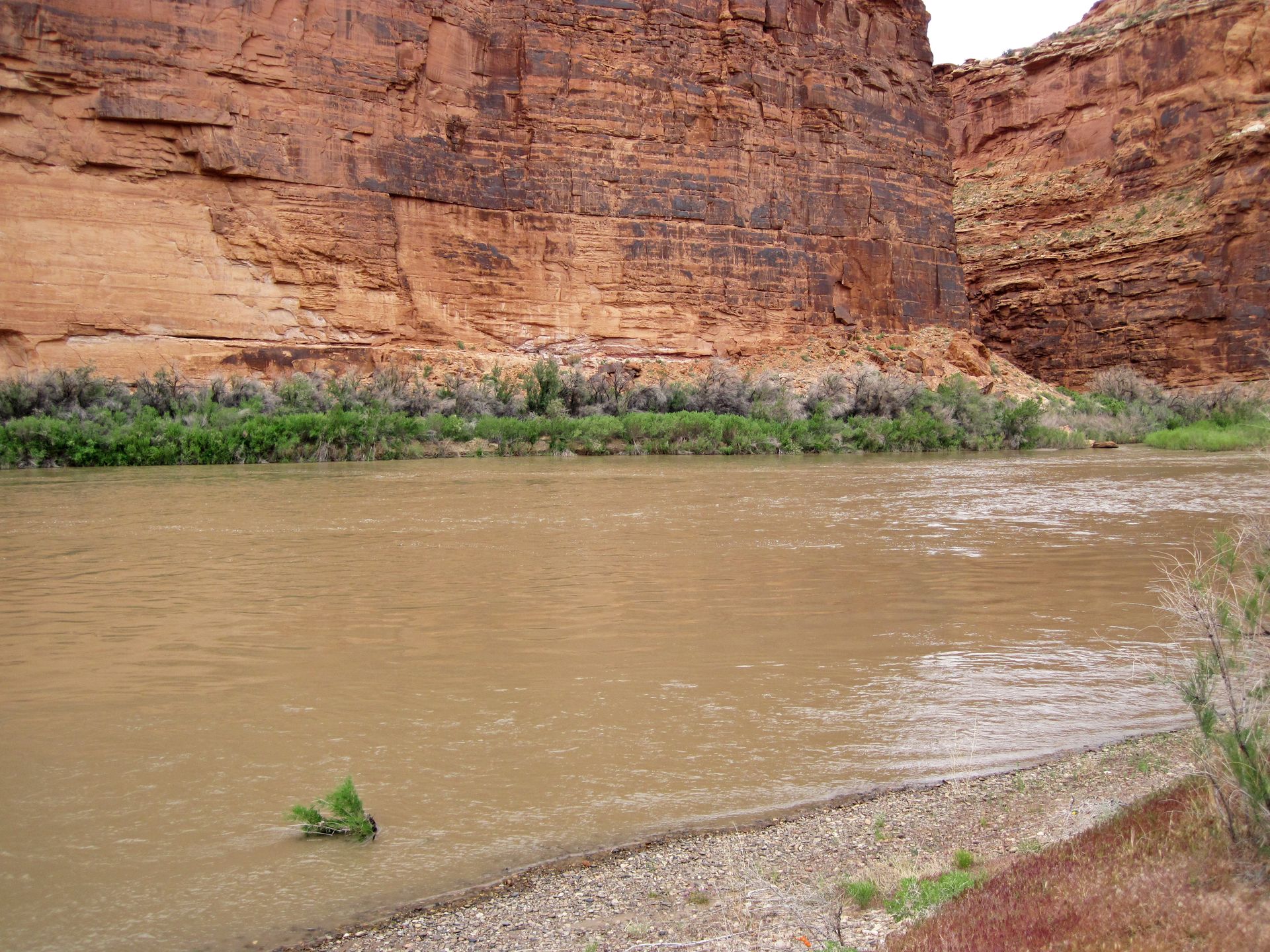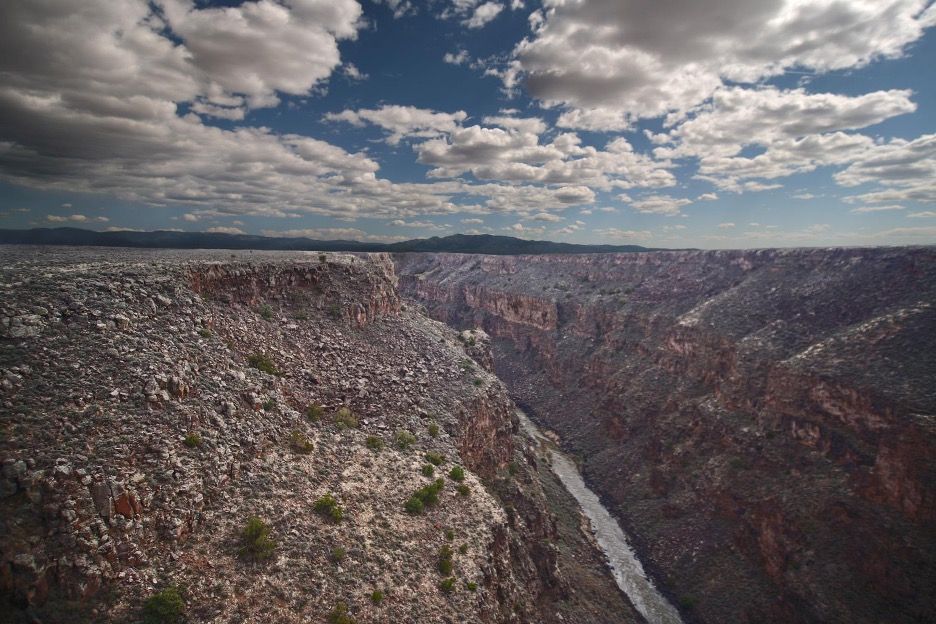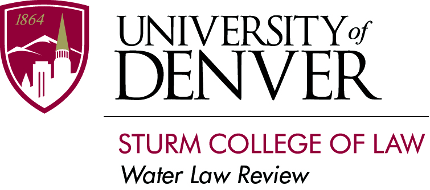Wildfires occurring with increased strength and frequency endanger the characteristics of Colorado watersheds that help them to do their jobs.
In American politics, a ‘watershed moment' is a turning point—something pivotal that can alter the outcome or trajectory of a movement. This idiom borrows its name from a geological feature where a land area channels rainfall and snowmelt into creeks, streams, and rivers, eventually guiding the water into an outflow point such as a lake or an ocean. Watersheds are essential to a healthy ecosystem; however, Colorado’s watersheds are struggling to survive. Wildfires occurring with increased strength and frequency endanger the characteristics of Colorado watersheds that help them to do their jobs.
When snow melts in the Rockies, watersheds help guide the snowpack’s moisture into tributaries and groundwater sources that eventually make their way to communities located to the south and west of the source. Watersheds consist of land features like rocks, soil, and vegetation that direct water through man-made conveyances such as pipelines, ditches, aqueducts, and reservoirs. In Colorado, most people know that watersheds may make or break a community’s health. Ten watersheds in the mountains provide more than two-thirds of Colorado's drinking water. Watersheds are critical ecosystems that determine whether pollutants make it into the groundwater that feeds our crops, regulate nutrients for sensitive wildlife areas, prevent soil erosion from flooding communities, and more.
Colorado Legislation Addresses Watershed Wildfire Susceptibility
Seeking to assess the wildfire-fueled danger to Colorado’s watersheds, Governor Polis signed Senate Bill 21-240 into law in June 2021. This ‘Wildfire Ready Watersheds’ legislation allocates $30 million in funds for the Colorado Water Conservation Board (“Board”). The Board will use the money to offer grants for local communities to repair wildfire damage to local watersheds and/or mitigate future damage, adapt city-planning and land-use for wildfire resilience, and evaluate overall susceptibility to wildfire damage to watersheds in Colorado.
While individual communities may use the funding for localized studies of their watersheds, the bill is not limited to small research projects. Instead, legislators have empowered scientists, community organizers, and other stakeholders to take a broad approach to watershed research. By December 31, 2022, the bill requires progress on a state-wide survey of watershed susceptibility to wildfire damage. The state-wide scope communicates a powerful message from government officials that watershed resilience is critical to Colorado’s environmental and economic health, and despite its cost, will remain a legislative priority.
Of course, SB 21-240 is only the newest of a decade’s worth of attempts from state officials to facilitate watershed resiliency efforts in Colorado. After the 2012 wildfires and 2013 flooding events across the state, the Colorado Resiliency Office put together a framework prioritizing four themes: “adapting to our changing climate, understanding risks from natural and other hazards, addressing social inequities and unique community needs, and pursuing economic diversity and vibrancy.” Within that framework, watershed preservation takes a star role. Coalitions of government offices, community organizers, scientists, and other stakeholders across Colorado see the intersection of watershed resiliency and community health, as well as the threat fires pose to watershed survival.
High-Severity Fires Lead to Longer Recovery Times for Watersheds
Fire is not a new threat to Colorado, or the West in general. As early as 2007, researchers at the University of Colorado warned that the “threat of high-severity wildfires to Colorado Front Range Communities and their water supplies [were] real and unprecedented.” Long-time policies in the region that focused on 100% fire-prevention contributed to dense underbrush rarely thinned out by smaller, more easily controlled fires. As a result, that dense underbrush often creates something called a “fuel-ladder,” which carries ground-level fire quickly into the tree-tops, resulting in stronger fires with more intense damage than ever before. Accumulating vegetation along the forest floor essentially creates kindling. A fire that might have swept quickly through an area instead stays longer and burns hotter, clearing any vegetation in its path.
In general, scientists know that watersheds are particularly susceptible to long-term effects from wildfires. The higher the severity of the fire, the more likely it is that a watershed can be dramatically—perhaps permanently—altered. A particular risk for watersheds is the delicate soil that preserves root systems and absorbs water. Wildfires consume the surface layer of the soil itself, in addition to destroying the binding organic matter that prevents erosion. As a result, the minerals and metals in the burned soil rise to the surface, manifesting as a hydrophobic layer that changes the direction and velocity of water run-off.
When the Grizzly Creek Fire burned through Glenwood Canyon in 2020, it left a devastating path of damage to homes and wildlife alike. In the White River National Forest, there are places where the fire injured the soil so badly that it separated from the mountain below. When the snow melted the following spring, the watershed guided soil and ash into the creek. When soil burns and mixes with ash, toxins are released, and leaving the groundwater contaminated by metals such as lead and mercury. In high concentrations, these toxins are dangerous for human consumption, and pose a large threat to wildlife and vegetation, as well. When fire burns through vegetation, it also removes the intricate system of roots that help soil stay put and increases the likelihood that soil erosion will lead to flooding and other dangers. Snowpack that collects in a burned forest accumulates black carbon, releasing it back into the atmosphere and increasing greenhouse effects on climate change. It can take more than sixty years after a fire for a forest to regain even a fraction of its former health.
Urgent Wildfire Threats Inspire Unorthodox Solutions
As climate change fuels fires that burn longer, stronger, and cover more ground, an increasing proportion of Colorado’s watersheds are in trouble. Without work to preserve watershed integrity and map out plans for disaster resilience, communities in the Colorado Front Range are at risk for long-term complications to their water supply that are anything but easy to resolve.
Difficult is not the same as impossible, but traditional remedies relied upon by state officials have notable downsides. One option is to use mechanical remedies such as chainsaws to remove dense vegetation to reduce risk of high-severity fires, but this option is costly and labor-intensive. Another option–prescribed fire–carries significant risk. A small, intentionally set fire can easily grow unwieldy and out-of-control due to unpredictable weather conditions and increasingly dry environments. For example, the Cerro Grande Prescribed Fire ultimately burned more than 47,650 acres after escaping the control of National Park Service fire personnel at Bandelier National Monument.
Solutions for protecting watersheds from wildfire damage are so controversial that some Colorado towns have had to become creative. In 2020, Nederland granted their local watershed “inalienable rights,” laying legal groundwork to treat the watershed the same way we might treat a person or corporation. However, critics of the resolution are not confident the idea will do much to guide formal legal solutions to environmental dangers. Proponents for “rights of nature” measures argue that granting legal personhood for watersheds will allow communities to better advocate on behalf of rivers, but critics are quick to point out that the idea is not grounded in actual American law–yet. That being said, in other countries activists have successfully lobbied for “rights of nature” provisions. Colorado activists could (and have already started to) follow their lead. The wildfire risk to Colorado’s watersheds is real and imminent, and there is not currently an obvious remedy. Perhaps urgent problems require unorthodox solutions.
Watershed Resilience Funding in Colorado Helps the Entire Mountain Region
Although there is no obvious solution, SB 21-240 is a promising start. SB 21-240 acknowledges that more research is needed to determine how to reduce wildfire harm to the state’s precious watersheds, while also putting funding in place that the Board can grant immediately. Such funding allows Colorado communities to repair old fire damage and mitigate new damage as the Board waits for the results of the state-wide survey to inform a long-term strategic plan. Eligible grant recipients include non-profit organizations, watershed coalitions, local governments, conservation and water conservancy districts, and Colorado’s tribal governments.
Prioritizing the health of Colorado’s watersheds starts locally, but the national impact is significant. At least eighteen other states depend on the health of Colorado’s watersheds for their own water supply. While SB 21-240 allocates funding to study and preserve Colorado’s watersheds, the impacts of this bill will extend further than the state’s geographical borders, rippling through the mountain region and beyond.
SOURCES
2020 Colorado Resiliency Framework, Colo. Resiliency Off. (2020), https://drive.google.com/file/d/1efF8j0JLAmAnxi8_U4jq75uEWTAKxrGm/view.
Bruce Finley, Does Nature Have A Right to Exist?, Denv. Post (July 23, 2021), https://www.denverpost.com/2021/07/23/nature-rights-colorado-mountain-town/.
Champion the Rights of Nature, Cmty. envtl. legal def. fund, https://celdf.org/rights-of-nature/ (last visited Feb. 11, 2022).
Colorado Watershed Restoration Program Grant Guidelines and Application Special Release Summer 2021, Colo. Water Conservation Bd. (2021), https://dnrweblink.state.co.us/CWCB/0/edoc/214785/cwrp_app_special2021_SB240_final.pdf.
Colorado Resiliency Framework, Colo. Resiliency Off. (2021), https://www.coresiliency.com/colorado-resiliency-framework.
D. G. Neary, An Overview of Fire Effects on Soils, 3 Sw. Hydrology 18-19 (1999), https://www.fs.fed.us/rm/boise/AWAE/labs/awae_flagstaff/publications/neary_fireeffectsonsoils.pdf.
Dennis C. Le Master, Guofan Shao, and Jacob Donnay, Protecting Front-Range Forest Watersheds From High-Severity Wildfires, Pinchot Inst. for Conservation (2015), https://csfs.colostate.edu/media/sites/22/2015/02/FINAL_Protecting_Front_Range_Forest_Watersheds_081407.pdf.
Hart Van Denburg, After The Grizzly Creek Wildfire Burns Through Glenwood Canyon, A Look At What Remains, Colo. Pub. Radio (Aug. 23, 2020), https://www.cpr.org/2020/08/23/after-the-grizzly-creek-wildfire-burns-through-glenwood-canyon-a-look-at-what-remains/.
Jason Samenow, How Extreme Climate Conditions Fueled Unprecedented Colorado Fire, Washington Post (Dec. 31, 2020), https://www.washingtonpost.com/weather/2021/12/31/colorado-fires-climate-weather-drought/.
Jerd Smith, Special Report: Inside the Toxic Link Between Colorado’s Wildfires and its Water, Water Educ. Colo. (May 26, 2021), https://www.watereducationcolorado.org/fresh-water-news/special-report-inside-the-toxic-link-between-colorados-wildfires-and-its-water/.
Michael Elizabeth Sakas, Melting Snow Usually Means Water for the West, But This Year It Might Not Be Enough, Nat’l. Pub. Radio (May 23, 2021), https://www.npr.org/2021/05/23/998566953/melting-snow-usually-means-water-for-the-west-but-this-year-it-might-not-be-enou.
Michelle Mandler, It’s Time to Pass a Rights of Nature Amendment, J. Civ. Rts and Econ. Dev. (May 27, 2020), https://www.jcred.org/shortreads/time-to-pass-a-rights-of-nature-constitutional-amendment.
Protecting Critical Watersheds in Colorado from Wildfire: A Technical Approach to Watershed Assessment and Prioritization, Front Range Watershed Prot. Data Refinement Work Grp. (Aug. 2009), https://csfs.colostate.edu/media/sites/22/2015/02/Protecting_Critical_Watersheds_In_CO_Final_Revised_Report.pdf.
R. Moench, Vegetative Recovery After Wildlife, 6 Natural Resources Series 307 Colo. State U. Coop. Extension (1999), https://static.colostate.edu/client-files/csfs/pdfs/06307.pdf.
SB 21-240, 2021 Reg. Sess. (Colo. 2021).
Watershed, Merriam-Webster Online https://www.merriam-webster.com/dictionary/watershed (last visited Feb. 7, 2022).
Watershed Management, Colo. State Forest Serv., https://csfs.colostate.edu/forest-management/watershed-management/ (last visited Feb. 7, 2022).
What is a Watershed?, Nat’l Oceanic and Atmospheric Admin., https://oceanservice.noaa.gov/facts/watershed.html (last visited Feb. 7, 2022).
Wildfire Ready Watersheds Includes State Susceptibility Analysis and Mitigation Framework, Colo. Water Conservation Bd. (Dec. 8, 2021), https://cwcb.colorado.gov/news-article/wildfire-ready-watersheds.



